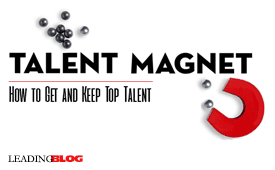 |
 |
06.04.18

Talent Wins: The New Playbook for Putting People First
I Ram Charan, Dominic Barton, and Dennis Carey write in Talent Wins: Most executives today recognize the competitive advantage of talent, yet the talent practices their organizations use are vestiges of another era. They were designed for predictable environments, traditional ways of getting work done, and organizations where lines and boxes defined how people were managed. As work and organizations become more fluid — and business comes to mean sensing and seizing new opportunities in a constantly changing environment, rather than panning for several years into a predictable future — companies must deploy talent in new ways. In fact, talent must lead strategy. To make this happen, they recommend forging what they call the G3. This is a group that consists of the CEO, the CFO, and the CHRO (Chief Human Resources Officer). Together, they “lead the way on anything where the deployment of talent influences the company’s results.” It is the “multiplier of your capacity, time, and capability.” Bringing the CHRO into the mix, signals that “talent consideration must be a critical part of every important decision.” Of course, for most organizations, this means greatly expanding the role of human resources. Finding, recruiting, supporting and developing talent is mission-critical work in the organization. Beyond just administrative work, it must become a creator of value and competitive advantage. The relationship between the CFO and CHRO is vital. Together they can do more than they could alone by “ensuring that the company’s financials and the company’s people are continually, inextricably linked.” The success of the G3 is up to the CEO, but the CFO and the CHRO “must be star performers who can learn from each other’s language and dive into each other’s business.” Training has to be built into the daily fabric or tour organization. People appreciate in value. “Investments in training are strategic bets on your most valuable assets.” This is not a haphazard process but one that uses predictive analytic software to find the right roles for talent, spotlight weaknesses, and forecast the skills that will be needed in the future. Another part of this is rigorously reexamining the organizations legacy processes and instilling a mentality across the organization that everyone should be developing their skills. “These moves quicken the pulse of a company, and help the company have the nimble urgency needed to compete successfully.” Driving a talent-first reorganization is the job of the CEO. The CEO is the organization’s top recruiter and it requires their constant attention. “Where to find people with the imagination and skills to propel the company; how to position your critical 2 percent and multiply its impact; what kind of talent the company lacks and how you will get it—becomes Job One.” CEOs need to have on their agenda:
  
Posted by Michael McKinney at 11:12 PM
|
BUILD YOUR KNOWLEDGE
 

How to Do Your Start-Up Right STRAIGHT TALK FOR START-UPS 
Grow Your Leadership Skills NEW AND UPCOMING LEADERSHIP BOOKS 
Leadership Minute BITE-SIZE CONCEPTS YOU CAN CHEW ON 
Classic Leadership Books BOOKS TO READ BEFORE YOU LEAD |